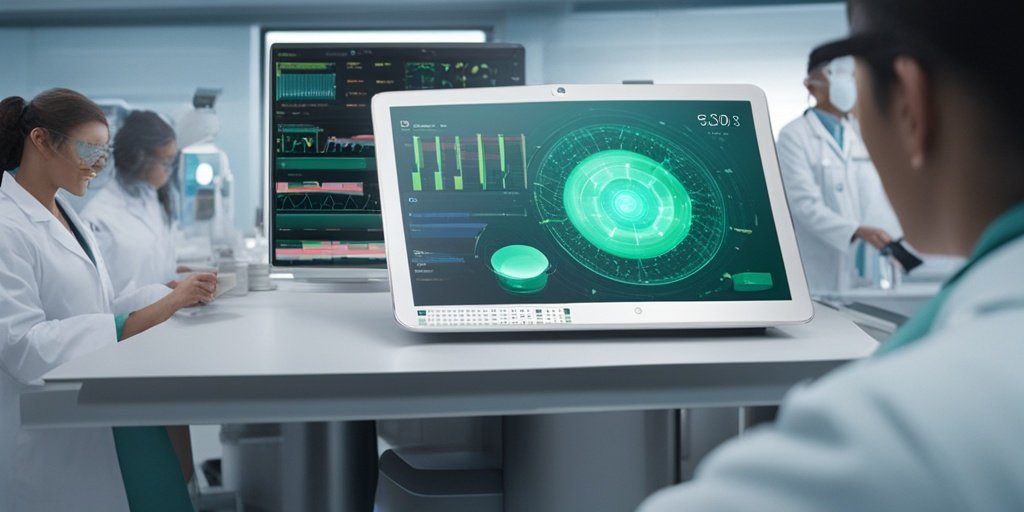⚡ Quick Summary
The increasing prevalence of food allergies necessitates a shift towards more accurate and scalable diagnostic techniques. This review highlights promising advancements in food allergy diagnosis, including novel methods like the basophil activation test and the potential role of artificial intelligence in interpreting diagnostic panels.
🔍 Key Details
- 📊 Current Standard: Oral food challenge, though time-consuming and risky.
- 🧩 Novel Methods: Basophil activation test and molecular allergology.
- ⚙️ Emerging Techniques: Mast cell activation test and bead-based epitope assay.
- 🔍 Exploratory Approaches: IgE glycosylation, IgG4, T and B cell assays, microbiome analysis, and plasma cytokines.
- 🤖 AI Integration: Potential for enhanced interpretation of diagnostic tests.
🔑 Key Takeaways
- 🌍 Food allergies are a growing global health concern.
- 💡 Current diagnostic methods have limitations, prompting the need for innovation.
- 🔬 Novel diagnostic techniques are being recommended for clinical practice.
- 🧪 Research is ongoing for tests like mast cell activation and bead-based assays.
- 📈 AI could revolutionize the interpretation of food allergy diagnostics.
- 🔄 A framework is proposed to combine established and emerging technologies.
- 👩🔬 Collaboration between researchers and clinicians is essential for progress.

📚 Background
Food allergies represent a significant and growing challenge in public health, affecting millions worldwide. The traditional gold standard for diagnosis, the oral food challenge, is not only time-consuming but also carries risks of severe allergic reactions. As such, there is an urgent need for more effective and predictive diagnostic techniques that can be integrated into routine clinical practice.
🗒️ Study
This review, authored by Wong DSH and Santos AF, explores the current landscape of food allergy diagnosis and discusses potential future directions. It emphasizes the importance of developing novel diagnostic methods that can enhance accuracy and reduce the risks associated with traditional testing methods.
📈 Results
The review identifies several promising diagnostic techniques, including the basophil activation test and molecular allergology, which are already recommended for clinical use. Additionally, it highlights tests that require further research, such as the mast cell activation test and bead-based epitope assays, indicating a robust pipeline of innovations in food allergy diagnostics.
🌍 Impact and Implications
The advancements in food allergy diagnosis have the potential to significantly improve patient outcomes by providing more accurate and timely diagnoses. By integrating emerging technologies and artificial intelligence, healthcare providers can enhance their diagnostic capabilities, ultimately leading to better management of food allergies and improved quality of life for affected individuals.
🔮 Conclusion
The future of food allergy diagnosis looks promising, with numerous innovative techniques on the horizon. By embracing both established and emerging technologies, we can enhance the accuracy and efficiency of food allergy diagnostics. Continued research and collaboration in this field are essential to realize the full potential of these advancements. Let’s look forward to a future where food allergies can be diagnosed with greater precision and safety!
💬 Your comments
What are your thoughts on the future of food allergy diagnosis? We would love to hear your insights! 💬 Leave your comments below or connect with us on social media:
The future of food allergy diagnosis.
Abstract
Food allergy represents an increasing global health issue, significantly impacting society on a personal and on a systems-wide level. The gold standard for diagnosing food allergy, the oral food challenge, is time-consuming, expensive, and carries risks of allergic reactions, with unpredictable severity. There is, therefore, an urgent need for more accurate, scalable, predictive diagnostic techniques. In this review, we discuss possible future directions in the world of food allergy diagnosis. We start by describing the current clinical approach to food allergy diagnosis, highlighting novel diagnostic methods recommended for use in clinical practice, such as the basophil activation test and molecular allergology, and go on to discuss tests that require more research before they can be applied to routine clinical use, including the mast cell activation test and bead-based epitope assay. Finally, we consider exploratory approaches, such as IgE glycosylation, IgG4, T and B cell assays, microbiome analysis, and plasma cytokines. Artificial intelligence is assessed for potential integrated interpretation of panels of diagnostic tests. Overall, a framework is proposed suggesting how combining established and emerging technologies can effectively enhance the accuracy of food allergy diagnosis in the future.
Author: [‘Wong DSH’, ‘Santos AF’]
Journal: Front Allergy
Citation: Wong DSH and Santos AF. The future of food allergy diagnosis. The future of food allergy diagnosis. 2024; 5:1456585. doi: 10.3389/falgy.2024.1456585